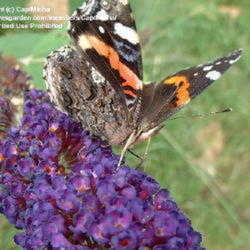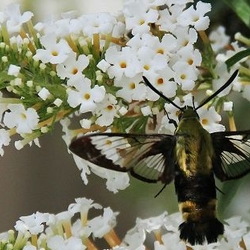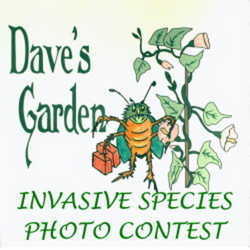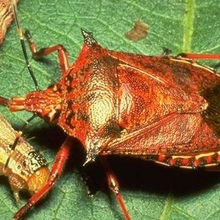Gardening is all about choices and many gardeners are stepping up to the environmental plate and choosing natives over exotics. If a flowering shrub is needed to soften the corner of a wall or building, why not select something that isn't going to harm the ecosystem?
Many of us love butterfly bushes. (Buddleja davidii) Butterflies do too, but did you know that this plant is fast becoming an invasive species in many areas? It is even considered a world-wide pest in places such as Great Britain. I confess, I had a collection of them until the winter of 2014 when they all perished due to the extreme conditions. I live well within the optimal growing zone for these shrubs and even had one that was over 10 years old. I never considered that an unusual cold snap would exterminate them. At first, I was eager to replace them with more butterfly bushes, as there are dozens of commercially available cultivars. However, the more I researched the plant, the more I decided that they weren't a responsible choice and started looking for alternatives.
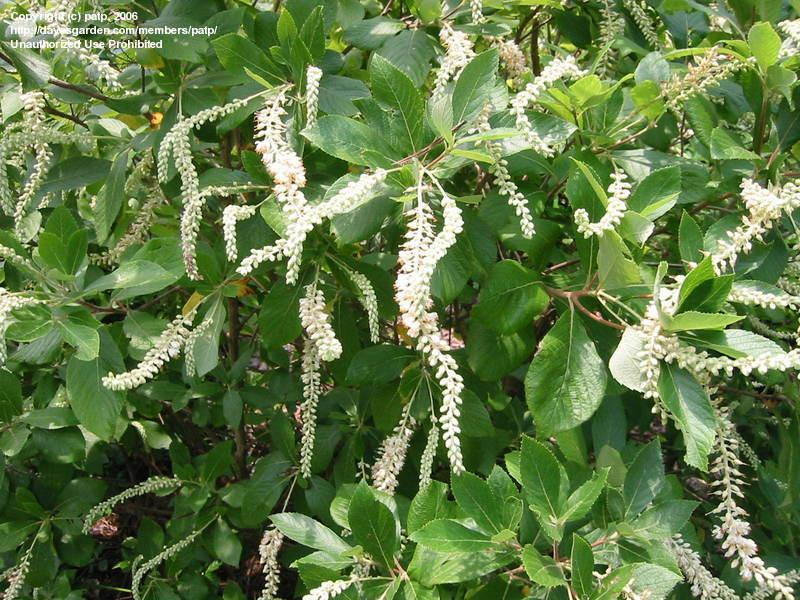 Summer Sweet (Clethra alnifolia) is an excellent replacement. This deciduous shrub is native to the U.S. and Canada, with a list of positive traits that should make any gardener smile. The long racemes with a choice of pink or white flowers bloom in mid to late summer and attracts butterflies and moths in great numbers, just like the butterfly bush. However, this plant also attracts native bees and they use it for a nectar source as well. There is an added element of an intoxicating scent that perfumes the garden. Birds and other wildlife consume the berries as a winter food source too. It has very few insect or disease problems as well. Win, win, win.
Summer Sweet (Clethra alnifolia) is an excellent replacement. This deciduous shrub is native to the U.S. and Canada, with a list of positive traits that should make any gardener smile. The long racemes with a choice of pink or white flowers bloom in mid to late summer and attracts butterflies and moths in great numbers, just like the butterfly bush. However, this plant also attracts native bees and they use it for a nectar source as well. There is an added element of an intoxicating scent that perfumes the garden. Birds and other wildlife consume the berries as a winter food source too. It has very few insect or disease problems as well. Win, win, win.
Another excellent choice is Virginia Sweetspire (Itea virginica). This eastern North American native blooms a bit earlier in the season, late spring to early summer.  The long, white flower racemes resemble the blooms of the butterfly bush as well. The flowers open from the bottom toward the tip, very much like the species I'm trying to replace, and like the summer sweet, they have a great fragrance too. Butterflies, moths, native bees and birds gather for the nectar and seeds. It is most attractive when it receives at least 6 hours of full sun each day and looks best when several plants are massed as a group. This plant has the added benefit of brilliant red fall foliage and is even considered a semi-evergreen in the southern part of its range. It has no significant pest problems and tends to be deer resistant. Another win.
The long, white flower racemes resemble the blooms of the butterfly bush as well. The flowers open from the bottom toward the tip, very much like the species I'm trying to replace, and like the summer sweet, they have a great fragrance too. Butterflies, moths, native bees and birds gather for the nectar and seeds. It is most attractive when it receives at least 6 hours of full sun each day and looks best when several plants are massed as a group. This plant has the added benefit of brilliant red fall foliage and is even considered a semi-evergreen in the southern part of its range. It has no significant pest problems and tends to be deer resistant. Another win.
I've decided to use these plants as replacements for the Buddleja davidii. They're hardy natives, attract insects and wildlife and do not pose invasive issues. By using both of them, I'm assured of summer-long show and my garden insects will not be nectar-deprived. I've even been told that hummingbirds find these plants attractive too. They make great fragrant landscape plants, have few pests or disease issues and I'm being a responsible steward of the land by planting natives instead of exotics.
The next time you choose plants and shrubs for your garden, step back and do a little research. Chances are, there is a similar native plant with the characteristics you are searching for that will be a better selection. If you do chose the Buddleja davidii, there are sterile cultivars that do not set seed, so check with your source before purchasing one.
The Clethra image is courtesy of Plantfiles and DG mamber 'patp. The others are my own.


